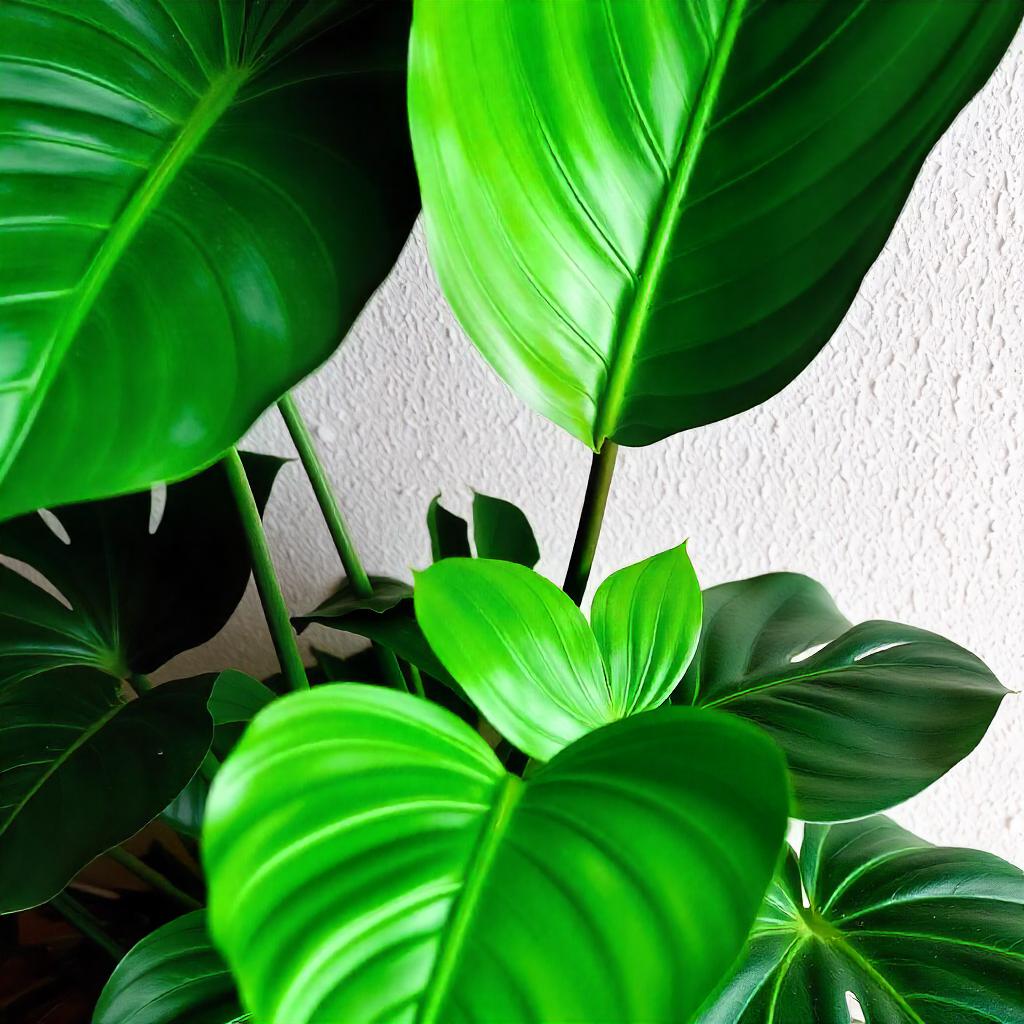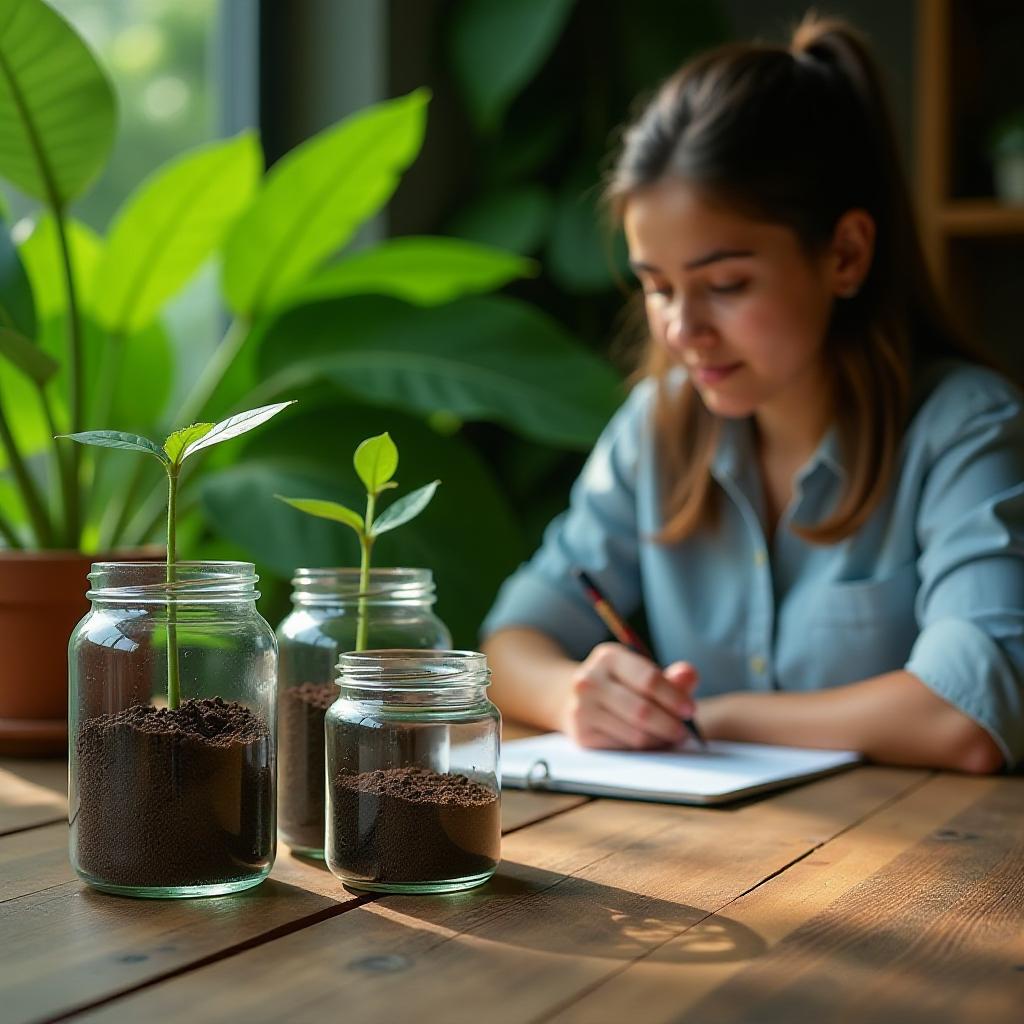While most would relate Monstera plants to their outstanding foliage and charisma, they remain among the favorite options of new plant parents. In this in-depth article about “Monstera Care Tips for Beginners,” we will have a closer look at each aspect of taking care of these tropical charmers to ensure they grow well and live healthily. In the following article, we will show you how to understand their needs and fix common problems, thus providing you with all the knowledge needed to grow your Monsters into healthy plants, gracing your indoor oasis.
The right balance of light, water, humidity, soil, and fertilization is the key that will allow your Monstera plant to thrive. With these easily controlled basic elements, it becomes quite easy to create the right environment for this plant to shine with tremendous appearance, bringing out the beauty of such an iconic botanical treasure.
Understanding Monstera Plants
Monstera plants are some of the popular houseplants due to their tropical feel and beautiful foliage. The huge leaves of these plants develop iconic splits and holes with time, thus making them spectacularly exotic indoors. These plants are native to the rainforests of Central and South America, where they thrive under conditions with much warmth, high moisture levels, and dappled sunlight.
Monstera is a genus within the family Araceae, which includes more familiar houseplants like philodendrons and peace lilies. These plants are considered epiphytes because they take support from larger trees in nature but do little harm since all of their nutrition comes from the air and around them. The most important facts about Monstera plants regard their climbing nature and aerial roots that help them attach to surfaces and climb towards better light conditions in their natural habitat.

The Monstera plants will develop into impressive specimens with heights well over a few feet. Such types of growth do require suitable support, like moss poles or trellises, which can help the plants grow upwards for overall health. Understanding how the Monstera grows and its natural habitat will better serve the beginner in providing for their needs and help such striking plants thrive indoors.
Lighting Requirements for Monstera Care
Light Requirements for Monstera Care
Your Monstera will thrive in proper lighting. This tropical beauty just loves to sit under bright, indirect sunlight. Put your Monstera in a place where it gets dappled sunlight, or near the window so that it has sheer curtains and the sun can peek through but softly. Direct sunlight will burn leaves.
This might be causing some leggy growth or small leaves if your Monstera is not getting enough light. Too much light can burn the leaves or cause them to fade. Watch how your plant reacts in its current lighting and move it as needed to find the happy medium that will promote healthy leaves and growth.
Indoor plants of Monstera require low light, but when placed outdoors, they need high light. If you can’t provide natural light, use a supplemental, houseplant artificial grow light. Remember, Monsteras are dependent on having the same pattern consistently for their good health. Regular rotation will promote even light distribution and prohibit unusual growth patterns from forming.
To provide the right conditions for your Monstera plant, it is essential to understand its light needs. You can ensure healthy growth and beautiful foliage of your plant by providing it with the best lighting environment. Remember, the perfect balance of light intensity is the key to the overall success of your Monstera.

Ideal Light Conditions
Monstera plants love to bask in bright, indirect light, similar to what they would get in their natural habitat under the canopy of a forest. The best lighting for Monstera includes placing the plant in such a position that it gets filtered sunlight and is not directly exposed to the sun, since it may burn the sensitive leaves of the plant. Let your Monstera get enough light but not get burned by strong rays of sunlight; it has to be a perfect balance for the healthy growth of your plant.
Indoor Monsteras like to be in a spot that is near a window with sheer curtains or blinds filtering the light. Most east or west-facing windows usually have the ideal light conditions and will offer brightness, but they won’t burn your plant because it’s too hot. Periodically rotate your Monstera to allow the light to be distributed equally, so it doesn’t start to lean toward the light source.
Knowing what light conditions will work for your Monstera comes with observing how your plant reacts to being in its position. Yellowing leaves or browning may also result from too much direct light, while leggy growth indicates not enough light is given to your plant. You can do this by adjusting the position or possibly using sheer curtains to diffuse the light to help create a suitable environment for optimal growth and foliage.
Indoor light exposure is one of the important adjustments one needs to do to keep a Monstera plant healthy. Observe your plant for indirect, bright light. When the leaves are fading, this is the time to place it near the window but do not allow it to be directly hit by the sun’s rays; it can burn them.
If it starts to turn yellow or even brown spots, then it’s receiving too much light. In such cases, move the Monstera to a less direct sunlight area. Keep in mind that for your plant to be able to grow and perform better, consistency in lighting is very important.
It is good to rotate the plant from time to time to achieve even sides. This prevents the plant from leaning towards the source of light, and it will assume a symmetrical appearance when healthy. Your indoor Monstera plant will thrive well by giving thought to light exposure.
Watering Techniques for Monstera
Proper water application is crucial with the plants of Monstera. Overwatering causes root decay, while its growth gets hampered if it does not get enough water. Here is how to water your Monstera using some of the indispensable techniques:
Consistent Moisture: Monstera plants prefer their soil to be consistently moist but not waterlogged. Water thoroughly when the top inch of the soil feels dry to the touch. Ensure proper drainage to prevent water accumulation.
Frequency of Watering: During the growing season, typically spring and summer, water your Monstera more frequently. In contrast, reduce watering during the dormant season in fall and winter. Adjust watering based on the plant’s specific needs.
Water Quality: Use room temperature water for your Monstera, as cold water can shock the roots. Additionally, consider using filtered or distilled water to prevent mineral build-up in the soil, which could harm the plant over time.
Checking Moisture Levels: Regularly check the moisture level of the soil by inserting your finger into the top layer. If it feels dry, it’s time to water. Always ensure excess water can drain out of the pot to avoid waterlogging, which can suffocate the roots.
Keeping Humidity at Optimal Levels for a Monstera
Keeping humidity levels optimum is something that a Monstera plant requires for growth. Mainly, this tropical beauty does well in humid, wet environs that give it a normal feel just like its native habitat. Low humidity droops leaves and gives brown tips to leaves. For optimal results, maintain a humidity level around 60-80%.
To maintain indoor humidity, place plants in close proximity to each other, or use a humidifier, and set a tray of water and pebbles near them. Mist your plant rarely to increase the humidity level. With a hygrometer, try to keep humidity at consistent levels. Like most other plants, a consistent state of humidity makes the environment somewhat stable for them and will put a smile on their leaves.
Importance of Humidity for Monstera Plants
Maintaining proper humidity is the crucial factor in taking care of this plant. It provides the Monstera with an ideal atmosphere, the closest to a tropical one, where it hails from, and it keeps the leaves of this plant fresh and full of vitality. Herein is the reason why humidity is vital for caring for Monstera:
Prevents Leaf Browning: Insufficient humidity can lead to the edges of Monstera leaves turning brown and crispy. By maintaining proper humidity levels, you can prevent this common issue and keep your plant looking its best.
Supports Healthy Growth: Humidity aids in the transpiration process, where plants absorb water through their roots and release it as vapor through their leaves. This process is vital for nutrient uptake and overall growth, making humidity essential for a thriving Monstera.
Enhances Air Quality: Balanced humidity levels not only benefit Monstera but also improve the air quality in your indoor space. By ensuring adequate humidity, you create a healthier environment for both your plant and yourself, promoting overall well-being.
Knowing how important humidity is to Monstera allows you to give your beautiful plant an environment that’s as close to ideal as possible. Giving your plant a balanced level of moisture in the air will surely make it flourish and please your eyes for years to come.
Increasing Indoor Humidity-Tips
You can follow a few easy and useful tips to raise indoor humidity for your Monsteras. Place a shallow dish of water and pebbles around the plants; this will add moisture to the air when the water evaporates. Plants grouped together tend to create a microclimate with higher humidity because plants release moisture by means of transpiration. Misting the leaves regularly with tap-watered room-temperature water can give them a sudden dose of moisture, especially in the dry interior climate.
Another effective way of raising the humidity is using a humidifier in the same room as your Monstera. It releases water vapors into the air and provides the most ideal humidity required for the growth of the plant. You can also place a humidifying pebble tray under the pot of the Monstera. As the water in it evaporates, it raises the humidity around it, improving its health and vigor. With these tips, you can ensure that your Monstera will thrive in indoor humid environments.
Selecting the Right Soil for Monstera Plants
Selection of proper soil for Monstera plants is quite crucial. The right potting mix should be well-draining to retain some moisture but never soggy. Peat moss, perlite, and bark go very well together.
Also, avoid heavy soils that easily compact, as they may invite root rot. Furthermore, well-aerated soil offers the roots a chance to breathe and promotes general plant health. Application of organic matter, like compost, might also be an important way to enhance soil structure and nutrient availability for the plant.
Allow the top inch of the soil to dry out between waterings but keep it moist; avoid root rot. Check soil moisture regularly with your finger. Use a good-quality potting mix at all times for a healthy growing environment of the plant to keep your Monstera vital and assure further growth.

Picking up the aspired soil for your Monstera is the very foundation of plant care. Finding the right balance in a mix that is well-draining and following closely when moistures are at an optimal setting will place your Monstera in the best possible environment to flourish. Healthy soil equates to healthy plants, and finding the right soil is part of the needed care for your Monstera.
Monstera Plant Fertilizing
Fertilizing a Monstera plant is an essential part of its care routine. Plants of this genus will enjoy being fertilized on a regular basis throughout the active seasons, usually spring and summer. Provide it with a balanced, water-soluble fertilizer containing a little higher nitrogen content to enhance good foliage growth.
To avoid nutrient burn in your Monstera, you can apply fertilizer at half or a quarter of the recommended strength. A salt buildup in the soil from over-fertilizing can cause root damage and yellow leaves. It is highly recommended to feed your Monstera every 4-6 weeks of the growing season.
Organic fertilizers, on the other hand, can also be used for the Monsteras, including compost tea and fish emulsion, since these are slow-release fertilizers and improve soil health. Always follow the instructions on the fertilizer label for dosage and frequency of application and adjust accordingly based on the plant’s responses. Proper fertilization will keep your Monstera in its glory and the foliage bright and healthy.
Common Problems and Causes
Generally speaking, Monsteras are pretty resilient plants, but even then, they tend to develop some of the common problems that could put their health in jeopardy. The most prevalent problem is yellow or brown leaves due to overwatering or poor drainage. For this, keep your Monstera in well-draining soil and maintain the watering schedule accordingly.
Watch out for another problem: the brown spots on the leaves from sunburn or nutrient deficiencies. To avoid this, it’s good to filter the light and fertilize your plant periodically. The periodic unanimations from spider mites and mealybugs can cause dwarfing of growth and damaged leaves in the plants. Apply some natural remedies or insecticidal soap for effective pest control.
If your Monstera isn’t growing well or is growing very slowly, consider whether the conditions are too dark or if the humidity is off. Sometimes just a bit more light or increased humidity really gets them going. You should also systematically go over your Monstera for signs of stress and quickly take action where needed. That will keep your Monstera healthy and looking nice. Finding and troubleshooting some common problems in advance can ensure that your Monstera will be okay and that it keeps on growing under your care.
Generally speaking, one should take care of a Monstera plant in a balanced way regarding light exposure, feeding with water, air moisture, soil type, fertilizing, and control of undesired situations. Having understood these main recommendations for care, a beginner can give health and shining foliage to his Monstera plant. This is the place where attention to detail and regularity will be crucial in rearing a healthy and thriving Monstera specimen.
This is not a mere act of activity involving horticulture, but one that is rewarding since it actually enhances one’s relationship with Mother Nature. Patience, observation, and the willingness to learn in this botanical process will be invested in beginners and serve as the best tools in caring for fabulous foliage plants. May your Monstera grow well and grace your indoor oasis with its beauty for years to come.
